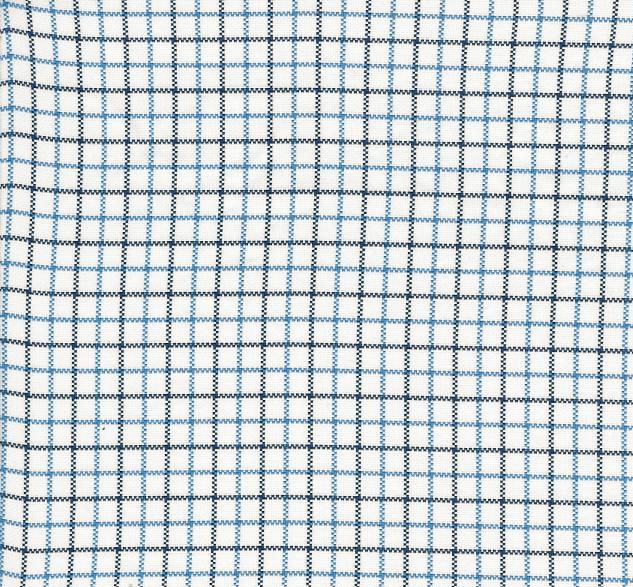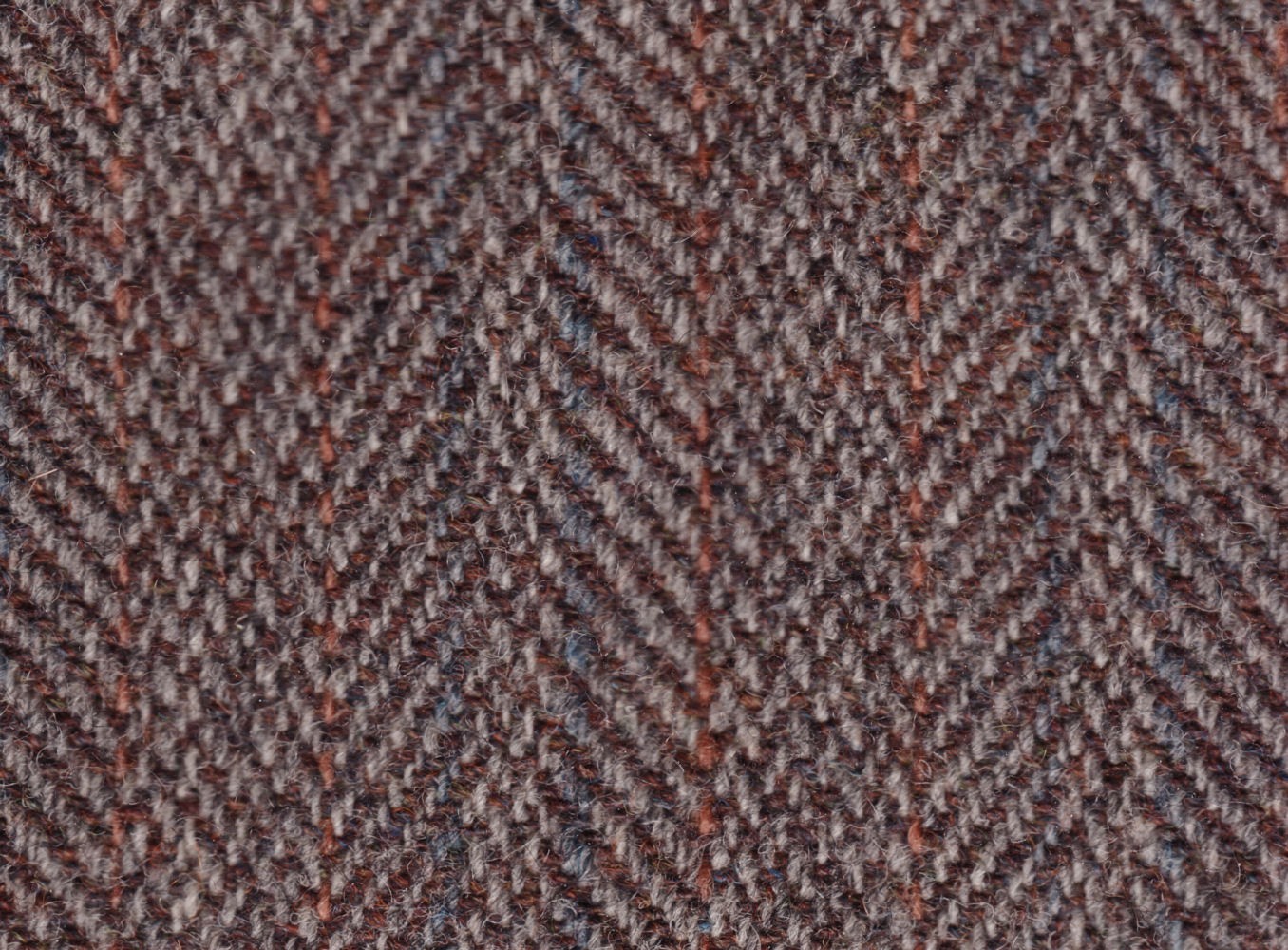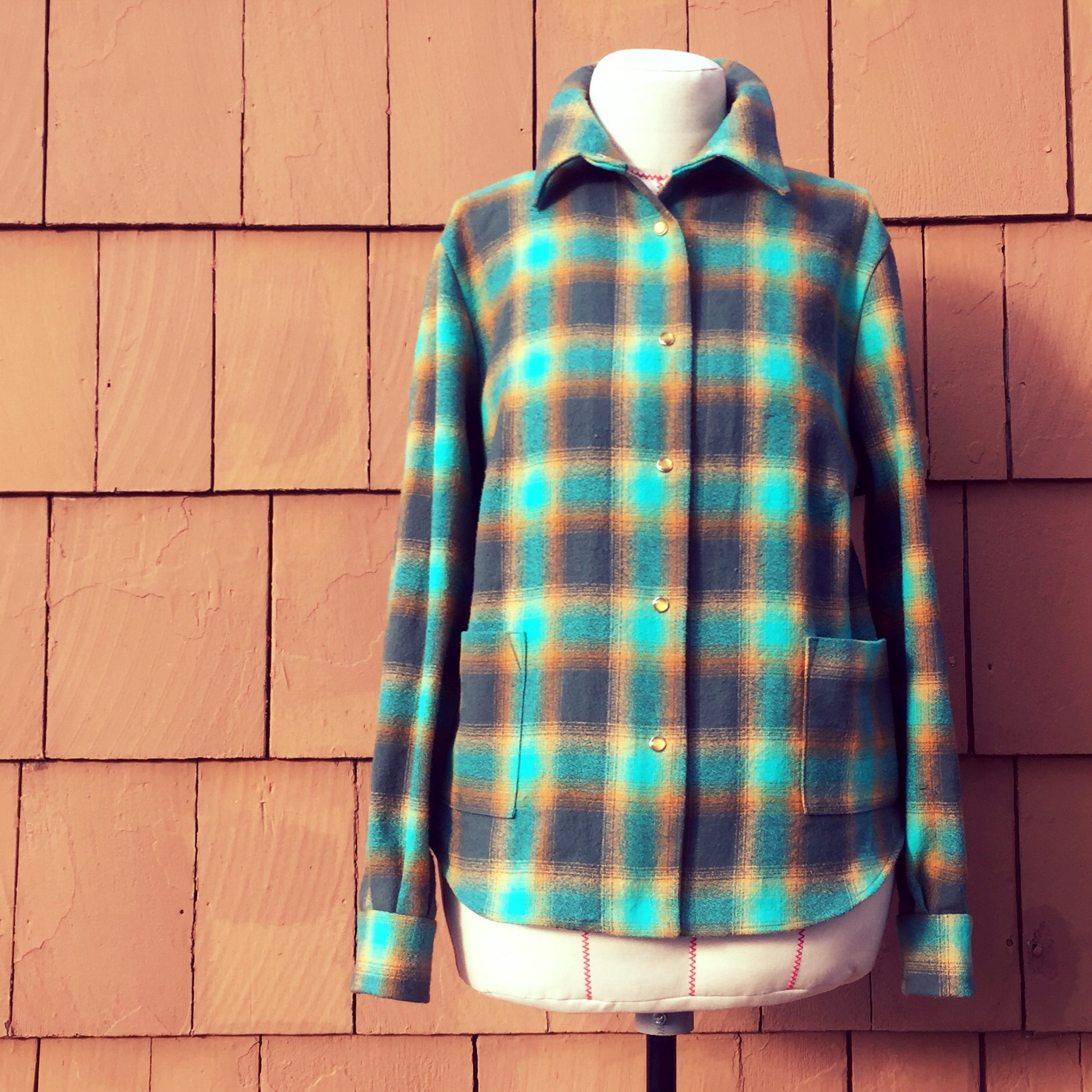|
Tattersall (cloth)
Tattersall is a style of check or plaid pattern woven into cloth. The pattern is composed of regularly-spaced thin, even vertical warp stripes, repeated horizontally in the weft, thereby forming squares. The stripes are usually in two alternating colours, generally darker on a light ground. The cloth pattern takes its name from Tattersall's horse market, which was started in London in 1766. During the 18th century at Tattersall's horse market blankets with this checked pattern were sold for use on horses. Today tattersall is a common pattern, often woven in cotton, particularly in flannel, used for shirts or waistcoats. Tattersall shirts, along with gingham, are often worn in country attire, for example in combination with tweed suits and jackets. Traditional waistcoats of this cloth are often used by horse riders in formal riding attire, and adorned with a stock tie. See also * British country clothing British country clothing or English country clothing is the traditional a ... [...More Info...] [...Related Items...] OR: [Wikipedia] [Google] [Baidu] |
Tattersall
Tattersall may refer to: People * Alfred James Tattersall (1861–1951), New Zealand photographer * David Tattersall (born 1960), British cinematographer * Gale Tattersall (born 1948), British-American film maker and cinematographer * Geoffrey Tattersall, judge on the Isle of Man * Geoffry Tattersall (1882–1972), English cricketer * George Tattersall (1817–1849), English sporting artist * Henry Tattersall (1892–1971), New Zealand cricketer * Ian Tattersall (born 1945), American paleoanthropologist and curator * John Lincoln Tattersall (1865–1942), English cotton merchant * Jonathan Tattersall (born 1994), English cricketer * Kathleen Tattersall (1942–2013), British educationalist * Mark Tattersall (born c. 1984), British journalist * Philippa Tattersall (born 1975), Royal Marine officer * Richard Tattersall (1724–1795), founder of racehorse auctioneer Tattersalls * Roy Tattersall (1922–2011), English cricketer * Thomas Tattersall (c. 1874–1905), English murderer ... [...More Info...] [...Related Items...] OR: [Wikipedia] [Google] [Baidu] |
Blanket
A blanket is a swath of soft cloth large enough either to cover or to enfold most of the user's body and thick enough to keep the body warm by trapping radiant body heat that otherwise would be lost through convection. Etymology The term arose from the generalization of a specific fabric called ''Blanket fabric'', a heavily napped woolen weave pioneered by Thomas Blanket (Blanquette), a Flemish weaver who lived in Bristol, England, in the 14th century. Earlier usage of the term is possible through its derivation from the French word for white: . According to the Oxford English Dictionary, the word was used a noun as long ago as the 14th century. William Shakespeare is recognised as the first person to use the verb ''blanket'', meaning to 'cover with or as with a blanket'. In the play ''King Lear'', published in 1608, the character Edgar says: "My face ile grime with filth, Blanket my loynes, else all my haire with knots." History An ancient form of blanket is recor ... [...More Info...] [...Related Items...] OR: [Wikipedia] [Google] [Baidu] |
Stock Tie
A stock tie, or stock, is a style of neck wear. Originally a form of neck-cloth that was often stiffened and usually close-fitting, formerly worn by men generally, but post-nineteenth century only in use in military uniforms. Another type of stock is worn by certain clergy and consists of black silk or other fabric, that falls over the chest and is secured by a band around the neck. Equestrians wear a stock tie around the neck when dressed formally for a hunt or certain competitive events. Most equestrian competition rules require it to be white. It is mandated attire for use in dressage and the dressage phase of eventing. Use of the stock tie also is seen in show jumping and fox hunting. The stock tie continues to be in fashion for equestrians. History The stock tie was worn by gentlemen as everyday apparel in the eighteenth and nineteenth centuries. It became more of a formal tie in the later nineteenth century. These old stock ties often were black or white. They were mad ... [...More Info...] [...Related Items...] OR: [Wikipedia] [Google] [Baidu] |
Tweed
Tweed is a rough, woollen fabric, of a soft, open, flexible texture, resembling cheviot or homespun, but more closely woven. It is usually woven with a plain weave, twill or herringbone structure. Colour effects in the yarn may be obtained by mixing dyed wool before it is spun. Tweeds are an icon of traditional Scottish, Irish, Welsh and English clothing, being desirable for informal outerwear, due to the material being moisture-resistant and durable. Tweeds are made to withstand harsh climates and are commonly worn for outdoor activities such as shooting and hunting, in England, Wales, Ireland and Scotland. In Ireland, tweed manufacturing is now most associated with County Donegal but originally covered the whole country. In Scotland, tweed manufacturing is most associated with the Isle of Harris in the Hebrides. Etymology The original name of the cloth was ''tweel'', Scots for twill, the material being woven in a twilled rather than a plain pattern. A traditional stor ... [...More Info...] [...Related Items...] OR: [Wikipedia] [Google] [Baidu] |
Gingham
Gingham, also called Vichy check, is a medium-weight balanced plain-woven fabric typically with striped, check or plaid duotone patterns, in bright colour and in white made from dyed cotton or cotton-blend yarns. It is made of carded, medium or fine yarns. History The name may originate . Alternatively, it is speculated that the fabric now known as ''gingham'' may have been made at Guingamp, a town in Brittany, France, and that the fabric may be named after the town. Some sources say that the name came into English via Dutch. When originally imported into Europe in the 17th century, gingham was a striped fabric, though now it is distinguished by its checkered pattern. From the mid-18th century, when it was being produced in the mills of Manchester, England, it started to be woven into checked or plaid patterns (often blue and white). Checked gingham became more common over time, though striped gingham was still available in the late Victorian period. The equivalent in the Frenc ... [...More Info...] [...Related Items...] OR: [Wikipedia] [Google] [Baidu] |
Waistcoat
A waistcoat ( UK and Commonwealth, or ; colloquially called a weskit), or vest ( US and Canada), is a sleeveless upper-body garment. It is usually worn over a dress shirt and necktie and below a coat as a part of most men's formal wear. It is also sported as the third piece in the traditional three-piece male suit. Any given waistcoat can be simple or ornate, or for leisure or luxury. Historically, the waistcoat can be worn either in the place of, or underneath, a larger coat, dependent upon the weather, wearer, and setting. Daytime formal wear and semi-formal wear commonly comprises a contrastingly coloured waistcoat, such as in buff or dove gray, still seen in morning dress and black lounge suit. For white tie and black tie, it is traditionally white and black, respectively. Name The term ''waistcoat'' is used in the United Kingdom and many Commonwealth countries. The term ''vest'' is used widely in the United States and Canada, and is often worn as part of formal att ... [...More Info...] [...Related Items...] OR: [Wikipedia] [Google] [Baidu] |
Shirts
A shirt is a cloth garment for the upper body (from the neck to the waist). Originally an undergarment worn exclusively by men, it has become, in American English, a catch-all term for a broad variety of upper-body garments and undergarments. In British English, a shirt is more specifically a garment with a collar, sleeves with cuffs, and a full vertical opening with buttons or snaps (North Americans would call that a "dress shirt", a specific type of collared shirt). A shirt can also be worn with a necktie under the shirt collar. History The world's oldest preserved garment, discovered by Flinders Petrie, is a "highly sophisticated" linen shirt from a First Dynasty Egyptian tomb at Tarkan, dated to c. 3000 BC: "the shoulders and sleeves have been finely pleated to give form-fitting trimness while allowing the wearer room to move. The small fringe formed during weaving along one edge of the cloth has been placed by the designer to decorate the neck opening and side seam." Th ... [...More Info...] [...Related Items...] OR: [Wikipedia] [Google] [Baidu] |
Flannel
Flannel is a soft woven fabric, of various fineness. Flannel was originally made from carded wool or worsted yarn, but is now often made from either wool, cotton, or synthetic fiber. Flannel is commonly used to make tartan clothing, blankets, bed sheets, and sleepwear. Flannel may be brushed to create extra softness or remain unbrushed. Brushing is a mechanical process wherein a fine metal brush rubs the fabric to raise fine fibres from the loosely spun yarns to form a nap on one or both sides. If the flannel is not napped, it gains its softness through the loosely spun yarn in its woven form. The term "flannel shirt" is often mistakenly used to refer to any shirt with a plaid or tartan pattern. However, 'flannel' refers simply to the fabric, and not all flannel shirts are plaid. History The origin of the word is uncertain, but a Welsh origin has been suggested as fabric similar to flannel can be traced back to Wales, where it was well known as early as the 16th century. The ... [...More Info...] [...Related Items...] OR: [Wikipedia] [Google] [Baidu] |
Cotton
Cotton is a soft, fluffy staple fiber that grows in a boll, or protective case, around the seeds of the cotton plants of the genus ''Gossypium'' in the mallow family Malvaceae. The fiber is almost pure cellulose, and can contain minor percentages of waxes, fats, pectins, and water. Under natural conditions, the cotton bolls will increase the dispersal of the seeds. The plant is a shrub native to tropical and subtropical regions around the world, including the Americas, Africa, Egypt and India. The greatest diversity of wild cotton species is found in Mexico, followed by Australia and Africa. Cotton was independently domesticated in the Old and New Worlds. The fiber is most often spun into yarn or thread and used to make a soft, breathable, and durable textile. The use of cotton for fabric is known to date to prehistoric times; fragments of cotton fabric dated to the fifth millennium BC have been found in the Indus Valley civilization, as well as fabric remnants dated back ... [...More Info...] [...Related Items...] OR: [Wikipedia] [Google] [Baidu] |
Villard Books
Villard, also known as Villard Books, is a publishing imprint of Random House, one of the largest publishing companies in the world, owned by Bertelsmann since 1998 and grouped in Penguin Random House since 2013. It was founded in 1983. Villard began as an independent imprint of Random House and is currently a sub-imprint of Ballantine Books, itself an imprint of Random House. It was named after a Stanford White brownstone mansion on Madison Avenue that was the home of Random House for twenty years. Books 1985 *''The Bill James Historical Baseball Abstract'', Bill James 1987 *'' Learned Pigs & Fireproof Women'', Ricky Jay *''Pattern Crimes'', William Bayer 1988 *''All I Really Need to Know I Learned in Kindergarten'', Robert Fulghum 1989 *''Jacob the Baker: Gentle Wisdom for a Complicated World'', Noah Benshea 1990 *''Latin for All Occasions'', Henry Beard 1991 *''Kiss the Hand You Cannot Bite: Rise and Fall of the Ceauşescus'', Edward Behr 1992 *''Let Me Take You Down: Insi ... [...More Info...] [...Related Items...] OR: [Wikipedia] [Google] [Baidu] |
Check (fabric)
Check (also checker, Brit: chequer) is a pattern of modified stripes consisting of crossed horizontal and vertical lines which form squares. The pattern typically contains two colours where a single checker (that is a single square within the check pattern) is surrounded on all four sides by a checker of a different colour. The pattern is commonly placed onto garments and is, in certain social contexts, applied to clothing which is worn to signify cultural or political affiliations. Such is the case with check in ska and on the keffiyeh. The pattern's all-pervasiveness and simple layout has lent to its practical usage in scientific experimentation and observation, optometry, technology (hardware and software), and as a symbol for responders to associate meaning with. Etymology The word is derived from the ancient Persian word ' which means "king" in the Sasanian game of Shatranj; an old form of chess which is played on a squared board of alternating coloured checkers. It is more ... [...More Info...] [...Related Items...] OR: [Wikipedia] [Google] [Baidu] |
London
London is the capital and largest city of England and the United Kingdom, with a population of just under 9 million. It stands on the River Thames in south-east England at the head of a estuary down to the North Sea, and has been a major settlement for two millennia. The City of London, its ancient core and financial centre, was founded by the Romans as '' Londinium'' and retains its medieval boundaries.See also: Independent city § National capitals The City of Westminster, to the west of the City of London, has for centuries hosted the national government and parliament. Since the 19th century, the name "London" has also referred to the metropolis around this core, historically split between the counties of Middlesex, Essex, Surrey, Kent, and Hertfordshire, which largely comprises Greater London, governed by the Greater London Authority.The Greater London Authority consists of the Mayor of London and the London Assembly. The London Mayor is distinguished fr ... [...More Info...] [...Related Items...] OR: [Wikipedia] [Google] [Baidu] |






